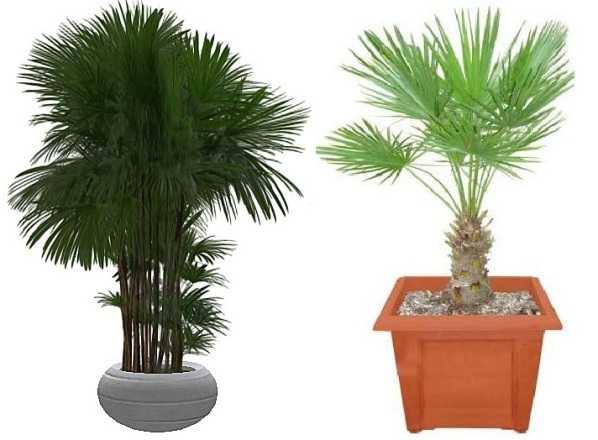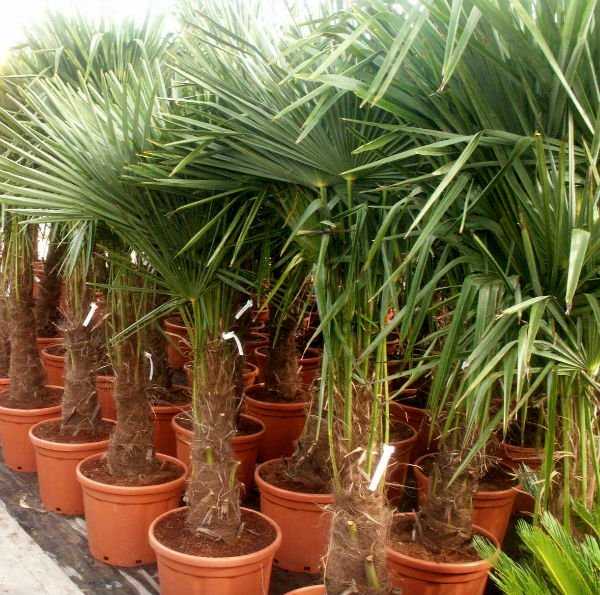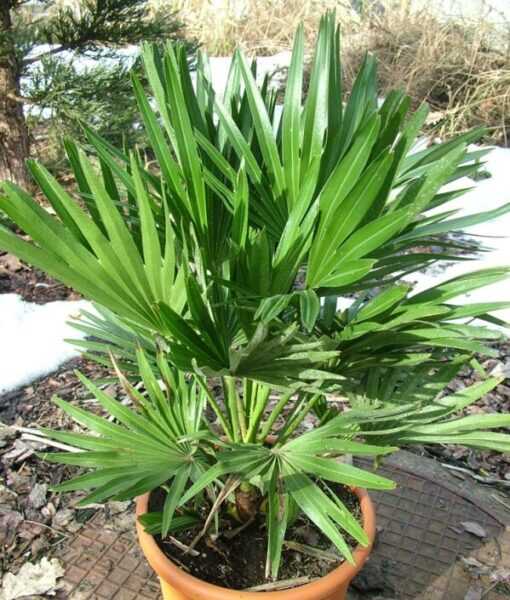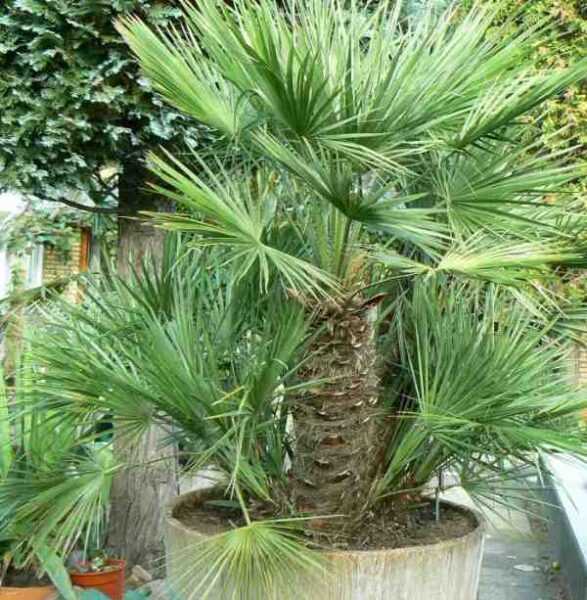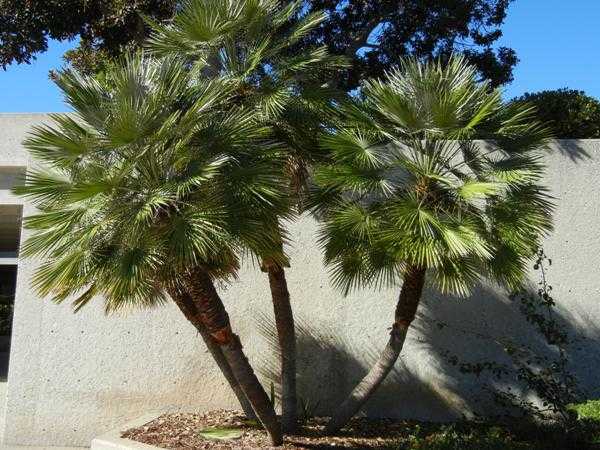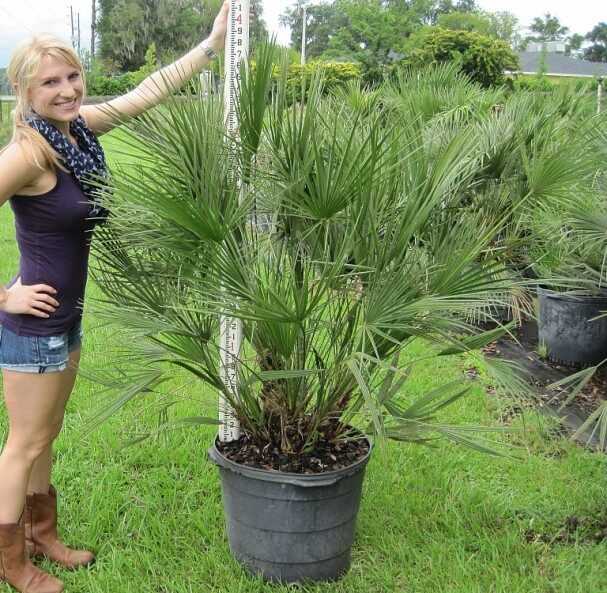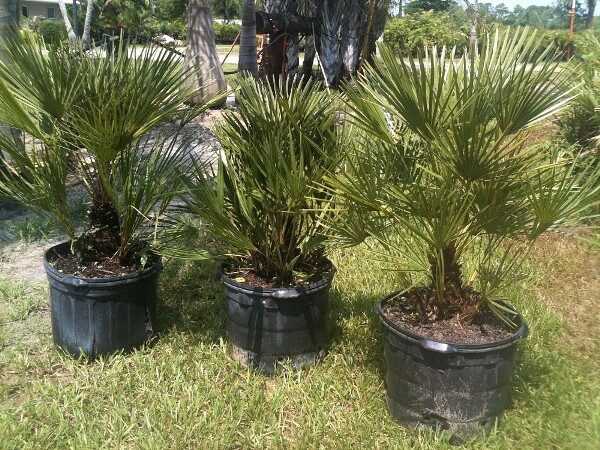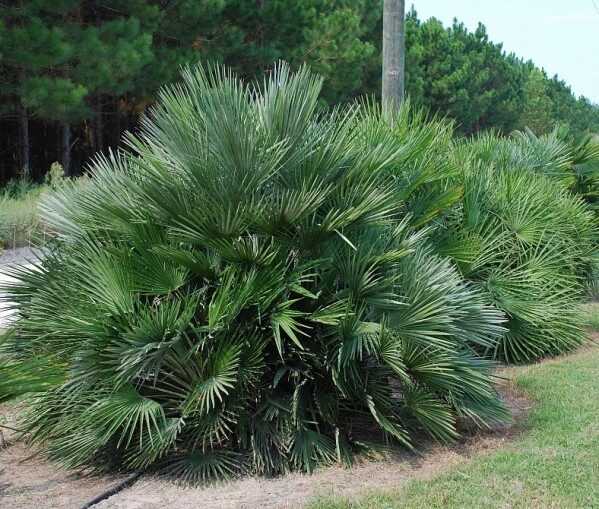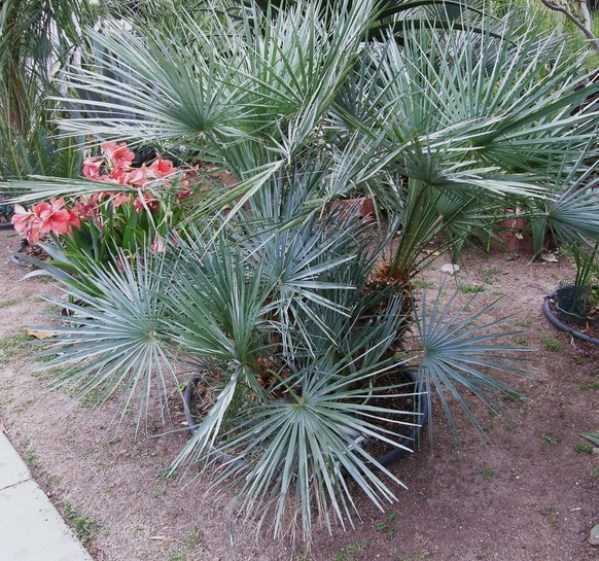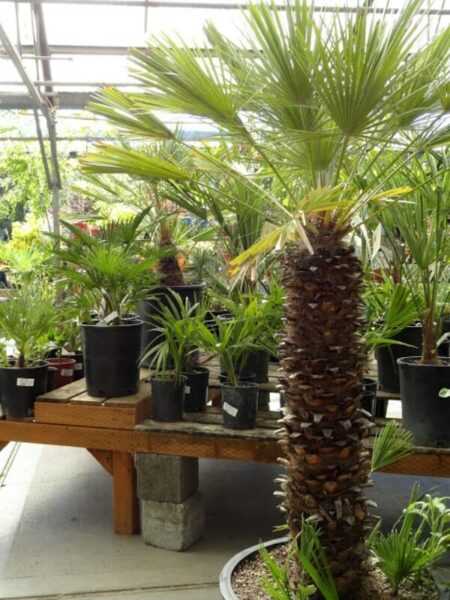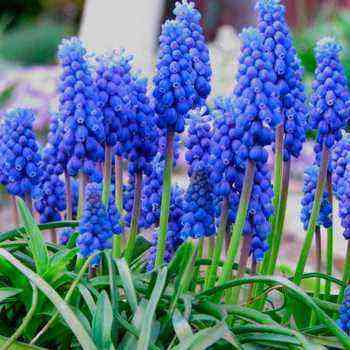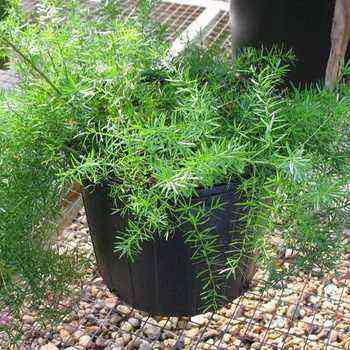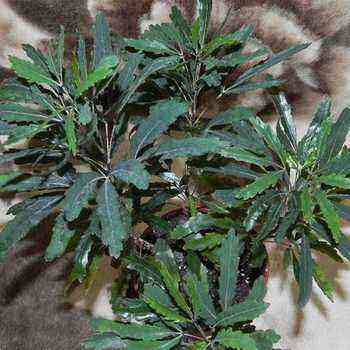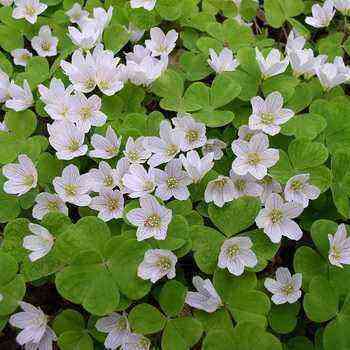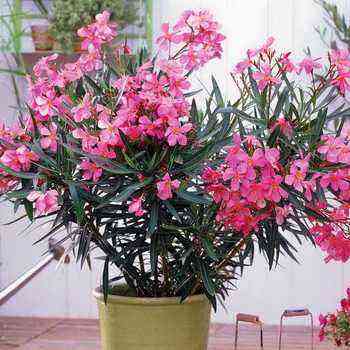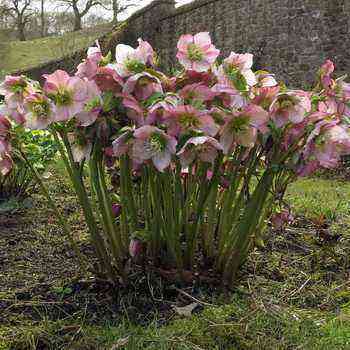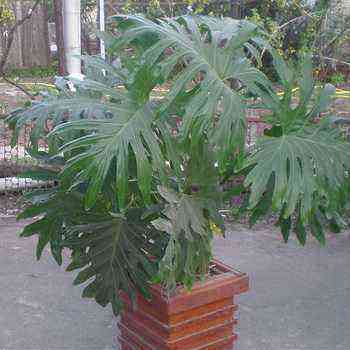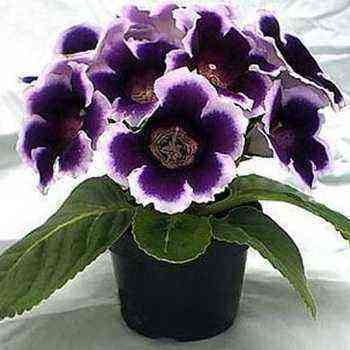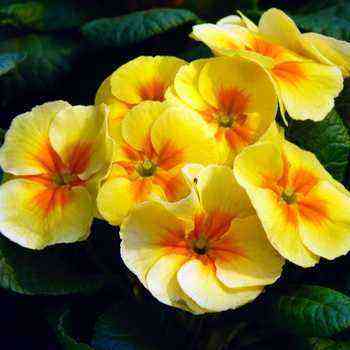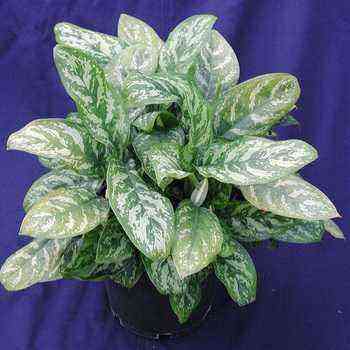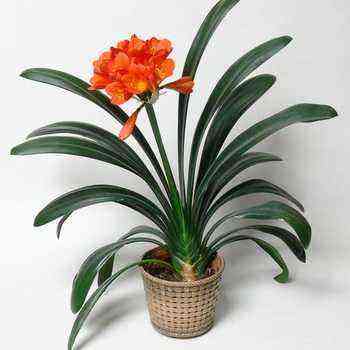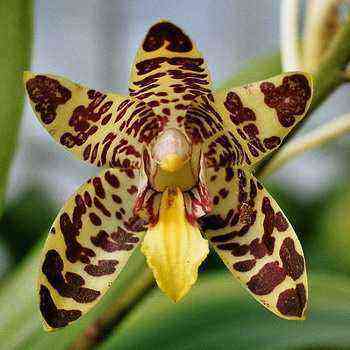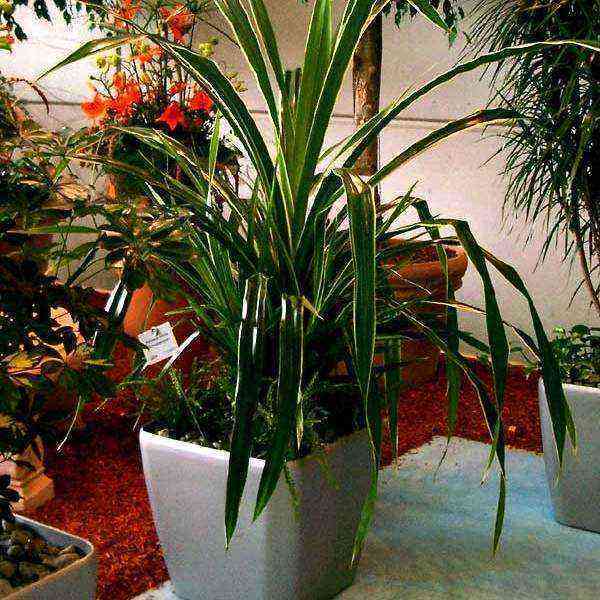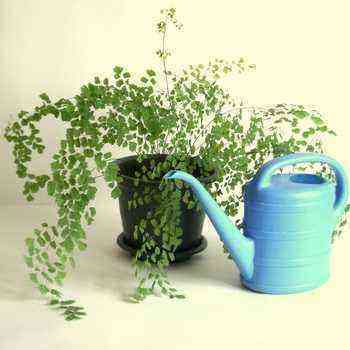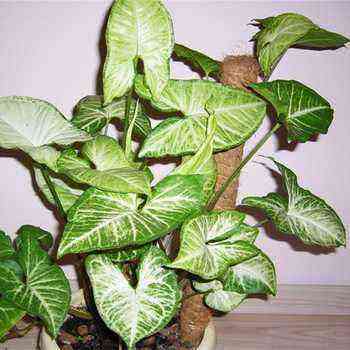Palm Hamerops is a flower of the Arekov family (palm family). It is the only palm tree native to continental Europe. They are mainly found in southwestern Europe – Sicily, Malta, Spain, Portugal, Central and Southern Italy, some part of the Mediterranean coast of France and northwestern Africa (Algeria, Morocco and Tunisia). This is the northernmost palm tree in the world – the most extreme points of its location on the island of Capraia off the coast of Italy and the settlement in Yerle-les-Palmiers.
Description of palm hamerops with photo
It is a shrub with lush leaves, several trunks, which grow from one base. The stems grow very slowly, close to each other. They can reach a length of two to five meters, and their diameter is 25-30 cm. Judging by the description, the Hamerops palm has lush hair on long petioles, ending in rounded foliage (15-20 leaves on each cutting). Each leaf is up to 1,5 meters long, has small thorns-needles that begin to grow from the surface of the trunk (they become smaller closer to the foliage) – thus, the flower is naturally protected from the attacks of wild animals. The surface of the leaves is split – 1/3 or 2/3 into narrow, sharp lobes. We offer you to see the Hamerops palm tree in the photo:
Flowers grow in dense but short inflorescences at the top of the stem. They are usually dioecious, although monoecious are also rare. The pollen captures the plant even before pollination begins, and then splits from the upper triangular petals and a flower appears. The size and quantity varies depending on whether the flower is feminine or masculine (for example, the feminine gives three flowers). The flowering period is March-June.
The unripe fruit is green in color, turning from yellow to brown over time (fully ripe). Fall in September or October. The seeds are a small cylindrical embryo weighing less than one gram (0,6-0,8), surrounded by several layers, from the outer to the inner: a thin outer layer (exocarp), a fleshy and fibrous part (pulp), a wide woody layer ( endocarp), nutrient layer (endoperm).
There is an underground rhizome producing shoots with hard, finger-shaped leaves.
Hamerops palm care at home
To grow a hamerops palm tree at home, it is worth taking care of lighting – this is one of the few types of palm trees that can safely tolerate direct sunlight. Therefore, in the summer, you can safely display your Hamerops on your balcony, in the garden or on a windowsill on the south side. If you kept the plant under diffused light, then you need to bring it to direct sunlight gradually, in order to avoid burns.
During the growth and development of the palm, the temperature should not fall below 25-27 ̊С, in the fall the temperature should be slightly reduced, and in winter it should not fall below 6-8 ̊. The room where the flower is kept must be ventilated every day.
During the growing season, caring for the hamerops palm tree consists in timely watering and spraying the foliage. They need a lot of water, but only soft – settled rain or bottled. Watering should be done as soon as the soil begins to dry out. In autumn, the amount drops sharply, and in winter this must be done very carefully (especially if you put it in a cool place with drafts). But in any situation, do not allow the soil to dry out. In addition, the leaves of the flower must be wiped with a damp cloth or sprayed with a spray bottle – these simple manipulations will allow you to increase the humidity in the room in which it is contained. In autumn and during wintering, it is better to cancel such a procedure, there is a huge risk of ruining the plant.
The Hamerops palm is transplanted in the spring or summer, and it is not necessary to carry out the procedure every year, as is the case with other palms, you just need to remove the top layer of soil and fill in a new one in its place. You can transplant adult plants once every 4-6 years, young plants – once every 2-3 years.
Palm hamerops from seed
The palm tree can also reproduce with the help of seeds. To do this, they should first be soaked in water for five days, and then placed in loose soil to a depth similar to the size of the seed itself. The soil must be prepared in advance – it must consist of a mixture of turf soil, compost, humus and sand. And most importantly – do not forget about good drainage, because Hamerops is not used to stagnation of water in the roots, and it is fraught with rotting of the roots. After 2-3 months, the first shoots appear, which at first will have an integral shape (they will become fluffy after 2-3 years of life). It is not so difficult to grow a hamerops palm from seeds, the main thing is to follow the rules of agricultural technology.
For vegetative propagation, shoots should be used, which will certainly germinate on the trunk of any palm tree. Be careful – the side shoots don’t look like.
After sowing, it is necessary to maintain the temperature in the room at 25-30 ̊С, and once a week to feed with mineral fertilizers.
The mature leaves are used to make rugs, baskets and panicles. Young leaves are impregnated with sulfur to make them even softer – and then used when doing delicate, almost jewelry work
The fruit is not edible, but is known medicinally as an astringent due to its high tannin content and bitter taste.
Hamerops humilis or Hamerops stocky variety
Indoor plant, most often found as a growing bush. Its homeland is hot, dry hills and mountains, as well as the pools of the Mediterranean Sea. The range of distribution – from Africa, the Atlas Mountains in Morocco to Spain, France and eastern Turkey.
A small attractive palm tree began to gain frenzied popularity due to its incredible frost resistance – it can withstand prolonged cold weather at minus 6 degrees, but besides this it grows quite quickly and is even resistant to drought.
As I already said, the Hamerops humilis flower is an outwardly ordinary bush, but its height is quite consistent with the Palm family – 4,5 meters. The leaves are lush, segmented and grow to about 60 cm in length and the same in width. The leaves can be blue-green and yellow-green (still gray-green). All this beauty is supported on a slender stem two meters high.
Close to the trunk, you can see small bright yellow flowers hidden behind the lush green foliage.
